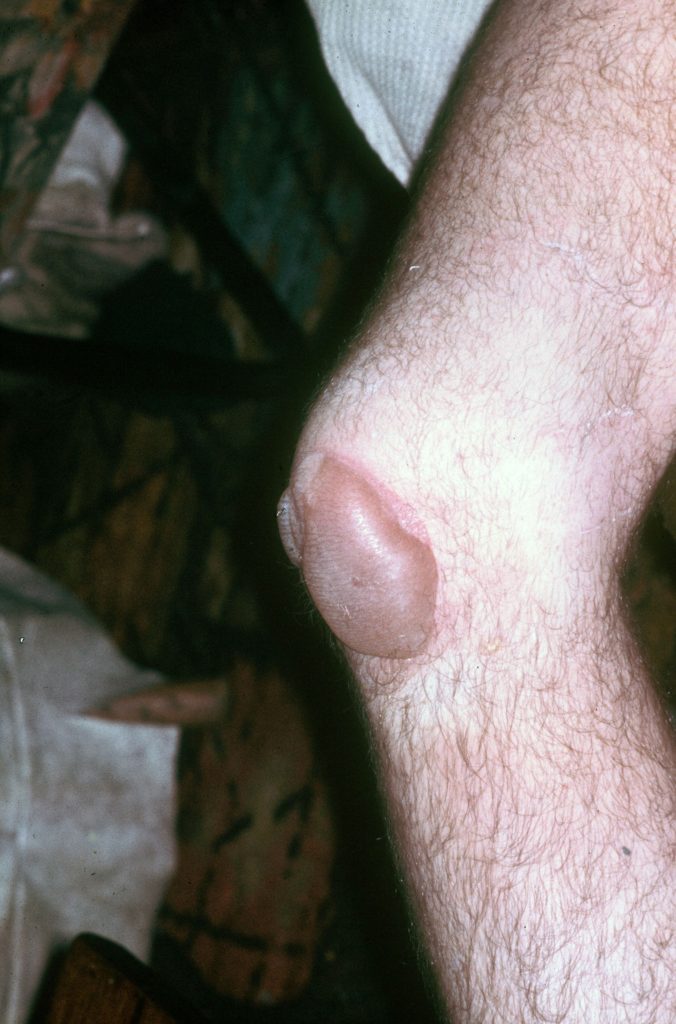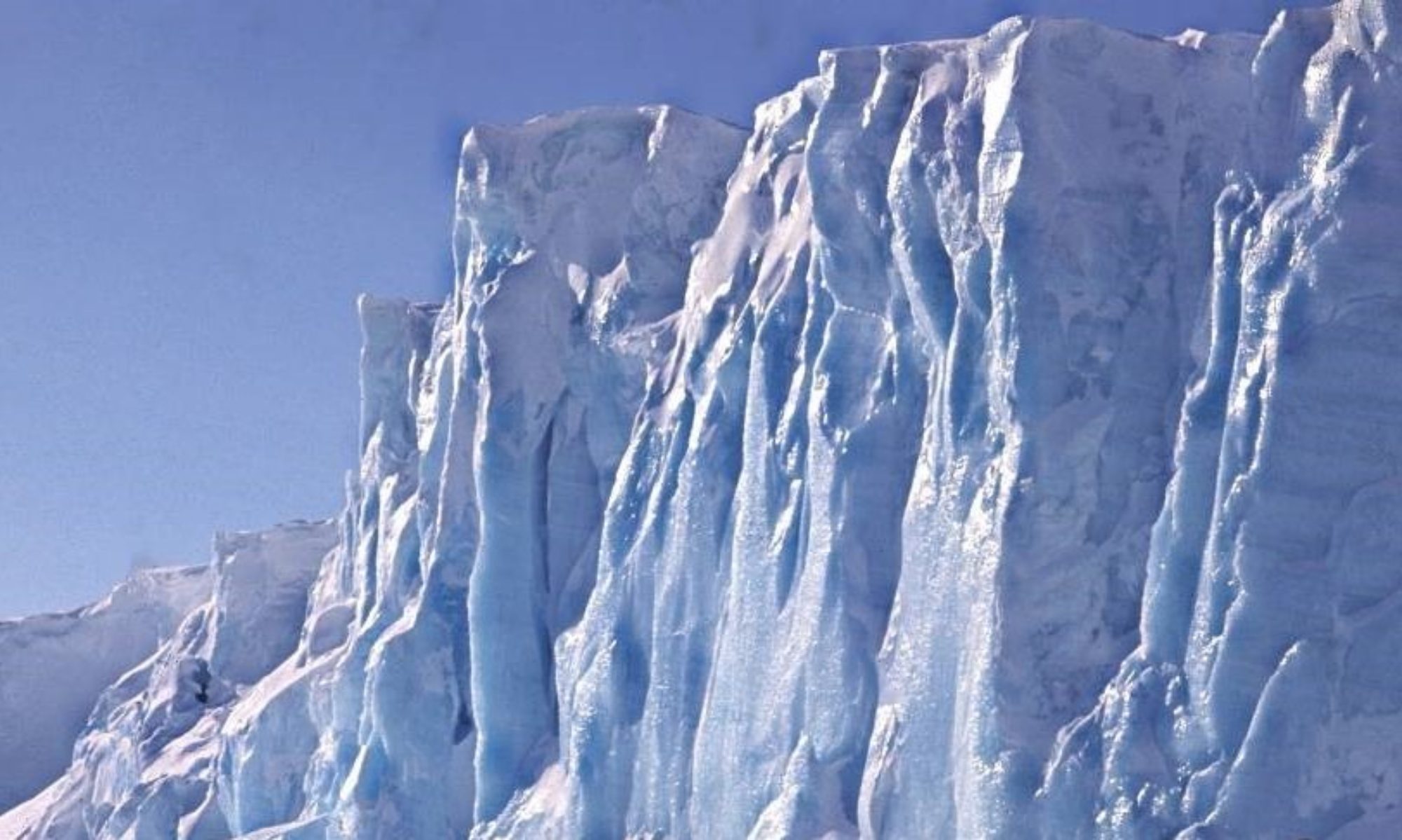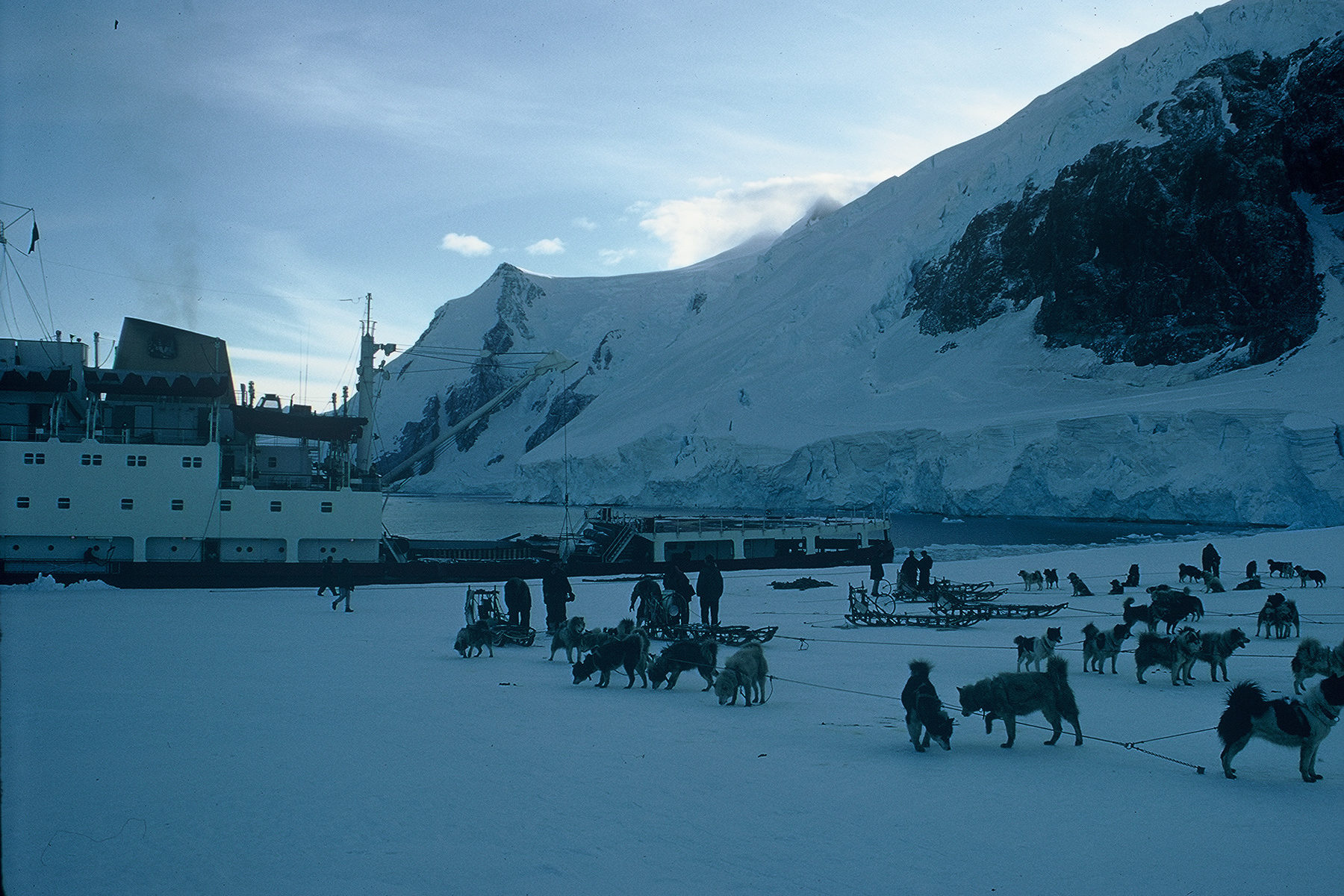Return to Stonington over the Sea-ice (continued)
When they tried to pull, their four legs shot from under them and they sprawled bewildered on their bellies. Before long, mutiny was in the air and when finally I gave the order to swing back onto the old ice, my team turned as one. There was nothing for it but to follow the old ice towards the coast and hope that conditions might improve.
Sure enough, before long we came to a surface of solidly frozen ice floes, on which we could once more travel seaward. Not far ahead was the rocky headland of Camp Point, where there was an old food depot we had been asked to check. However, as I rounded the headland, looking for a suitable place to go ashore, I felt a floe sink beneath me. Before I could react, a raft of ice had tilted beneath my feet and I found myself immersed in icy water. Close to land, pressure from the sea beneath had become too much for the gigantic crazy paving on which we were travelling. The floes had been forced apart and the “cement” had reverted to a semi-frozen skin in which they floated. The only hope was to keep the sledge moving, but now the dogs began to fall between the floes. As they panicked and ceased to pull, the sledge lost way until eventually it too slid sideways off a floe and began to settle into the thin skin that was covering the sea.
The situation seemed critical. Expecting the sledge to sink at any minute, I quickly cut the main trace and unclipped the dogs from their side traces, lest they drown. To my surprise, however, the sledge, though well and truly embedded, did not sink completely. Hope dawning, I attached a rope to it and, crawling from floe to floe, made my way towards the shore 30 yards away. After several fresh duckings, I discovered that I was safe enough on the larger floes so long as I did not try to stand up; landing proved awkward since the last floe, heaving on a slight swell, was separated from the sloping bank of smooth slippery ice by three feet of water. The floe was small and the bank steep, so if I fell in I should be unable to climb cut again. Taking no chances, I leant cautiously over the gap and cut hand and foot holds with an ice axe before delicately transferring myself to the shore. In front was a ten foot wall of vertical ice which demanded more step cutting. Then, teeth chattering and toes numb, I set out to look for Malcolm.
Seeing my plight in time, he had returned to the far side of the headland. Now I found him in a position little better than my own, 40 yards out, among loose floes, with the rear of his sledge half under water. Fortunately, his dogs had not broken through as well and before long our combined efforts had heaved the sledge safely onto dry land. My feet needed immediate attention, but they soon came back to life in the warmth of Malc’s sleeping bag and, without wasting any more time, we scrambled hack over the broken rocks of the point.
I had been fearing the worst but the sledge was just as I had left it, and the Picts, for once too frightened to fight, had remained huddled anxiously together on a large floe; all that is except ‘Chinook”, a large, cheerful but relatively timid dog, who appeared to have been sent to Coventry as he sat in splendid isolation on a small floe of his own. The first task was to clip the dogs back onto the main trace – not so easy in the confined space of an ice floe, with eight dogs trying to lick me to express their pleasure at my return.
That done, I fastened a rope to “Morag” at the front of the truce and, with Malcolm pulling on the other end, they ran ashore with surprisingly little difficulty, hauling each other out of the water as hey fell in. Next, each dog had to be heaved up the ice wall and dropped down the far side. It was quite some time before the team was finally spanned in the steep-walled gully beyond. That left the sledge to be rescued. I unloaded it, on hands and knees, while Malcolm hauled tent, boxes and sledge-bugs ashore with the rope. At last, with the aid of a pulley system, the lightened sledge could be tipped onto a floe and righted.

By the time we could think of pitching the tent it had long been dark and the temperature was well down in the -20°Cs. Shaking from cold end exposure, I wriggled thankfully into my sleeping bag, only to experience excruciating pain as the frozen tissue of fingers, toes and knees thawed out. I slept very little that night.
I was badly frost-bitten but we decided to press on the following night in case the weather broke. We reached base just 24 hours after we had started at 5.30 in the morning. By midday the sky was overcast, and plumes of snow were blowing off the edge of the Plateau. The blow lasted eight days and when it ceased all the sea ice between Stonington and Camp Point had disappeared.
Rob Collister, GA – Stonington 1971

